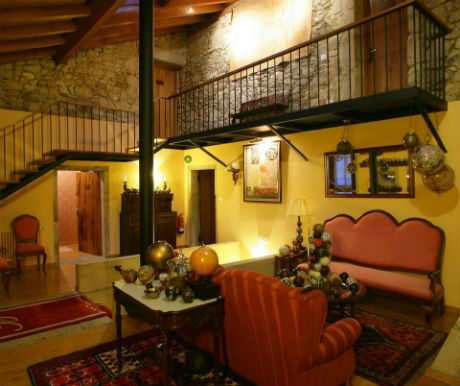Santiago is seductive. Once referred to as “an ideal city, which is overflowing with history and timeless as well” in a UNESCO-ICOMOS report, Santiago de Compostela is one of Northern Spain’s jewels. Many consider it to be Northern Spain’s most important tourist destination. Its old quarter is a UNESCO World Heritage Site, and the city is home to probably the most impressive example of Romanesque architecture in Spain. This is the incredibly beautiful Cathedral of Santiago de Compostela, which is the last stop on the famous pilgrimage trail, the Camino de Santiago.
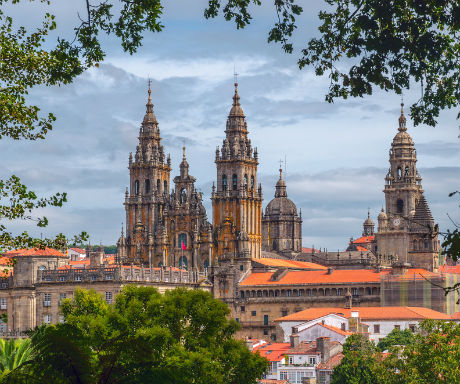
Magical medieval streets
As yet I haven’t done the Camino, as it is fondly referred to, but I have seen the friendly, beautiful old city of Santiago glistening magically in the rain. Its medieval streets can be traced back to the 11th century, when the old town was completely rebuilt after it had been destroyed by the Moors towards the latter part of the 10th century. It is packed with dazzling examples of architecture, from the Romanesque, Baroque, Gothic and Neo-Classical influences.
Taverns and restaurants where gastronomy is an art-form
Santiago de Compostela is capital of Galicia, where gastronomy is an art form, and the hospitality is normally wonderful. Gastronomy is an integral part of the culture of the city, and you can be sure of eating well, regardless of your budget. There is a superb choice of taverns, restaurants and bars.
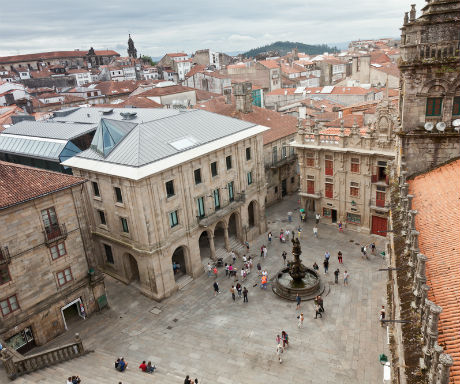
Culture and history abound
Apart from its magnificent, famous Cathedral, Santiago de Compostela has an abundance of culture, historic monuments, contemporary architecture and interesting museums. It has also won a number of prizes because of the balance it strikes between its green spaces and architecture. Make sure you check out the city from atop its Cathedral.
Fiestas and fun
Fiestas and folklore are also an important part of the spirit of the city. A number of fiestas take place at various times during the year, which make the University city even more vibrant than normal. The highlight of these takes place in July, which has been designated to be of International Tourist Interest. This is the fiesta which honours the Apostle Santiago (St. James). It’s believed that he preached in Galicia, and that after his death in Palestine, his body was brought back and buried in Santiago. His tomb was rediscovered by Pelayo, a religious hermit, in 814 – who was guided by a star.

A city that doesn’t seem to sleep
There’s nothing quite like 33,000 university students or so, to inject a special atmosphere into a city. Happiness and vitality pervade the streets, and year round, there’s an impressive program of all sorts of cultural events.
Santiago de Compostela is pulsating with entertainment, and whether it’s theatre and concerts you’re looking for, or fun party nights out, this is the perfect destination. The city just doesn’t seem to sleep.
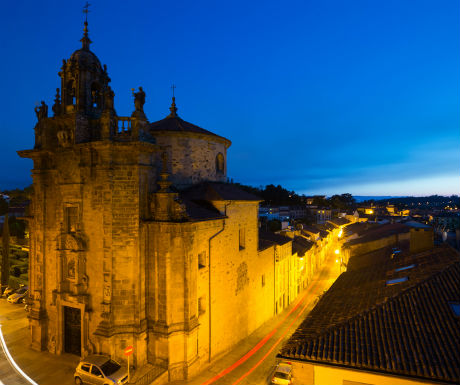
Santiago surroundings
Santiago is embraced by beautiful, lush verdant green countryside. Explore forests and mountains, and go a little further and you can see some of the Rias Baixas (fjords) of the region. When I was there last, we decided to have the best of both worlds, so we spent some time in the city, but decided to stay around 15 minutes drive away.
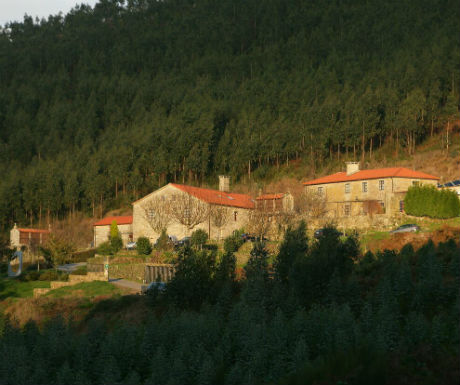
Casa Grande do Bachao
We stayed in Casa Grande do Bachao, a charming, historic manor house, in a space that has been very lovingly restored. The group of buildings that make up the 18th century manor, are set on a wonderful 3 acre estate, against a backdrop of a verdant forest. At the bottom of the estate lies the River Tambre. The main building blends wood and stone perfectly together, and is full of interesting touches, that give a warm, yet stylish ambiance.
The historic boutique hotel offers a choice of 12 rooms, each of which are individually decorated, and named after historic personalities. Rooms have views over different parts of the estate and woodlands. We were warmly welcomed and perfectly treated, making our stay there very romantic and special.
